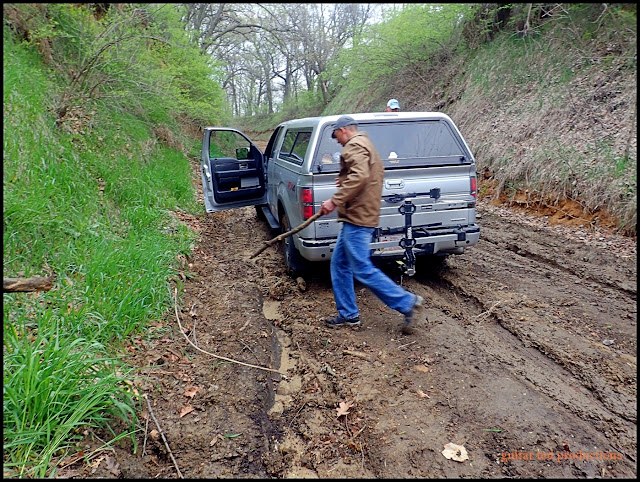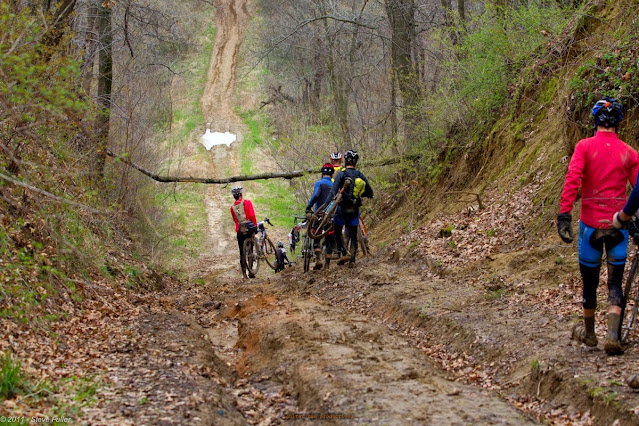 |
| Image courtesy of Keith Bontrager's social media. |
"First Bontrager bike with a license plate." Since the advent of putting electric motors on bicycles, I have posited this idea would evolve into fully electric powered, two-wheeled vehicles. It would appear that Keith Bontrager, now retired, has been tinkering with just such an idea and has published an article on Medium detailing his efforts.
The article is long and essentially takes you from Bontrager's initial thoughts on electrified bicycles through his evolutions in prototyping and finally to a vision for the future which he feels will pull more people out of cars and on to two-wheeled transportation.
This quote is pretty much the overall philosophy he has regarding pedelecs versus fully motorized two-wheeled vehicles: "An electrically powered bike without the pedals is likely to appeal to a large portion of the population who are not too wild about pedaling a bike around. If pedaling is not important to those folks, why not just remove them. That will reduce cost and complexity, and add useful cargo space."
Comments: I urge you to read Keith's words and caution you that much of it is technical in nature, but will reveal a reality I think is coming. That being the fully-electrified, no-pedaling vehicles with two wheels which will be what people really want. Cyclists will have a hard time with this, yes, but Keith's vision is what will be successful in the end, not restricting electrified two-wheeled vehicles to having to be pedaled.
 |
| Image courtesy of Black Mountain cycles |
Black Mountain Cycles Reissues Road Frame/Fork:
Five years ago Mike Varley of Black Mountain Cycles discontinued the Road frame and fork from his steel bicycle line. However; interest in having more made for the Japanese market has sparked a reissuing of the frame and fork in its original colors
The frame and fork can handle 32mm tires with ease, maybe 35's, and has fender mounts. This is a 'true road bike' so only caliper brakes here. The price is tentatively set at $895.00 USD depending on "what the hell" goes on with tariffs.
You can learn more from the BMC Road page HERE.
Comments: I usually do not talk much about pure road bicycles here, but I do have two BMC's for gravel and they both have been excellent bicycles. I have seen one of the original BMC Road bikes up close and they look really nice. I've been told they ride even better than they look. For the asking price, this is a killer deal and would be a better bike than whatever aero nonsense bike you can name would be for most riders.
Hmm.... I have an old Colnago which can run wider tires but for the fork I have on it now. This bike would solve my road bike issues and have tires the size I'd actually want to ride. Very tempting....
 |
| Image courtesy of GRVL |
GRVL Hydration Packs:GRVL, a newer name in the market for gravel riding aficionados, has just introduced a new hydration pack for gravel riding. Featuring recycled materials in its construction, the pack is made to allow for ease of use and to provide the usual hydration pack benefit of having a water/hydration fluid available to the rider without reaching down for a water bottle. Many riders say a hydration pack makes them drink more due to the ease of accessibility to their hydration fluids.
Other benefits and features include:
- Hydration Bladder Included – Easily removable for convenientfilling and cleaning.
● Tailored Fit – Adjustable shoulder and waist straps with
elasticated sections provide a snug, comfortable fit that
allows for unrestricted movement and breathability.
● Quick-Release Harness – A simple 1-click, 4-point system for
effortless on-and-off functionality.
● Secure Storage – One large zippered compartment for the
hydration bladder and essentials, plus a hanging loop for easy
drying and storage.
● Reflective Detailing – Enhancing visibility for early morning
and late evening rides.
The GRVL Hydration Pack costs approximately $127.00USD depending on tariff situations at the time of ordering.
Comments: Hydration packs have always made a lot of sense for many riders. This version of the idea looks great, is made responsibly, and should work well. One thing - They only offer this to fit "up to" a 44" chest size. Well.....that leaves me out. Also, the I find their lack of vowels.......annoying.
Shimano 100 Works Book:An incredible gift from a former co-worker and blog reader came on Tuesday of this past week. It is a 'coffee table' book of Shimano's 100 "best" products celebrating 100 years of Shimano's existence back in 2021.
According to my research, which could be wrong, this book was made available by lottery to those who entered to possibly be chosen to purchase one of 100 copies of the book which were published.
In following with the theme of 100, these books originally went for $100.00 dollars each, if you were chosen to buy one. I have seen a few on ebay with higher asking prices, so if you were to want to get one, it is possible, I guess.
I've no idea how my benefactor was able to get a hold of this, but obviously he did and now I have it in my possession. It is pretty humbling to think someone would want to buy this for me.
So, a public "thank you" was necessary and you know who you are who deserves this acknowledgement. Thank you!
Where We Came From:
In case you missed it, another couple of podcasts dropped this week in the "Where We Came From" series which is a podcast and blog post series describing how gravel cycling came to be, who were it's movers and shakers back in the day, and how things were done back then which led to the dominance of gravel cycling we know now in 2025.
On the occasion of Trans Iowa's 20th anniversary, I interviewed Jeff Kerkove, the co-founder of the event and one of the main influencers of how events were done back then. In this episode you'll get Jeff's remembrances of how the event came together, his background as a cyclist which was important to getting gravel cycling and culture headed in the direction it ultimately went, and his thoughts on Trans Iowa's influence.
That episode can be listened to on Spotify HERE or you can get it on your favorite podcast provider platform.
Next in the series we were able to corral a local gravel grinding pioneer, Mike Johnson, and get his take on how the early gravel scene worked and what he used to conquer events like Trans Iowa, the DK200, and other events leading up to his successful Tour Divide attempt.
Mike shared what it was like before there were gravel specific tires, bicycles, and accessories. How nutrition needed to be figured out for ultra-distance events. Things like lighting, mud clearing, and clothing were all unknowns facing these early gravel pioneers and Mike was giving us great examples of these challenges they all faced as gravel grinders.
If you want to give this episode a listen you can check it out on Spotify HERE.
Both these podcasts also help mark the 20th anniversary of the first Trans Iowa. I could have chosen many others to do this with, but this came together in a hurry and it worked out well for all involved. I suspect others from this era of Trans Iowa and gravel events in general will get their shot at telling their stories as long as we can record them. Stay tuned for more...
That is a wrap on this week! Get out there and ride some bicycles!
















































